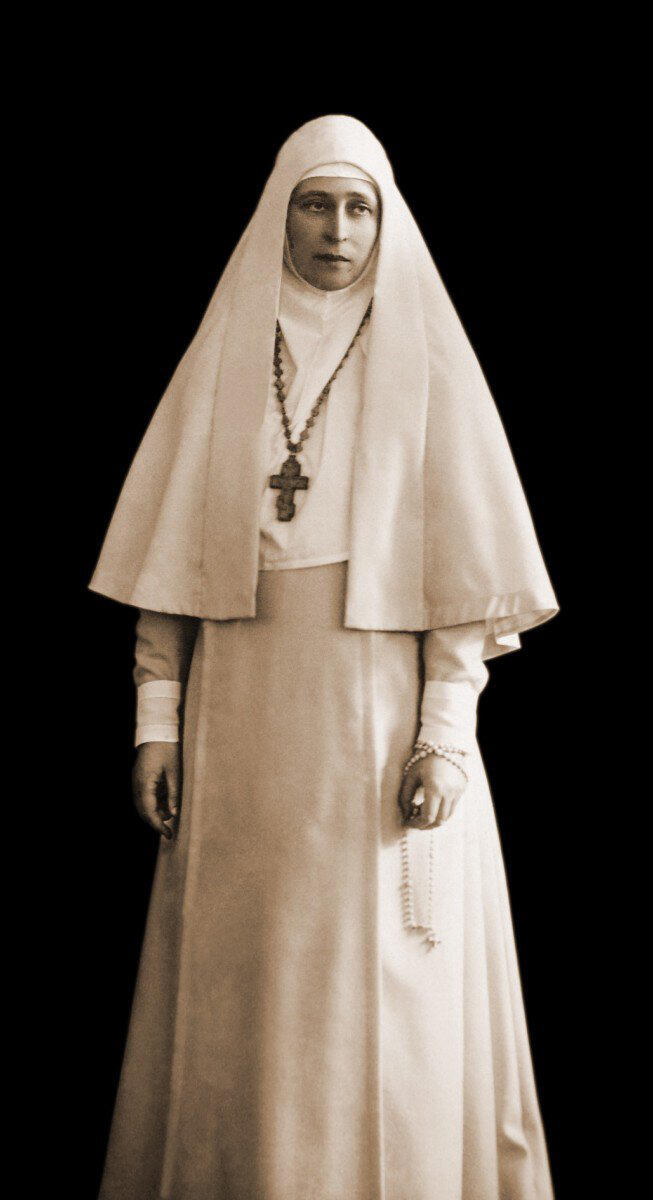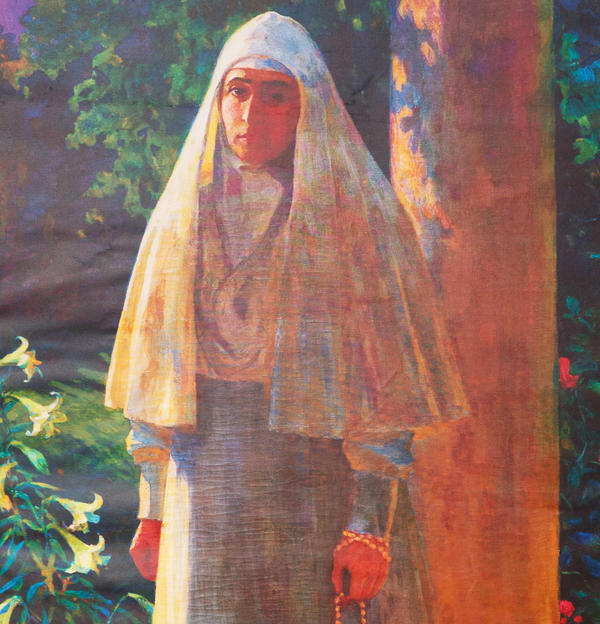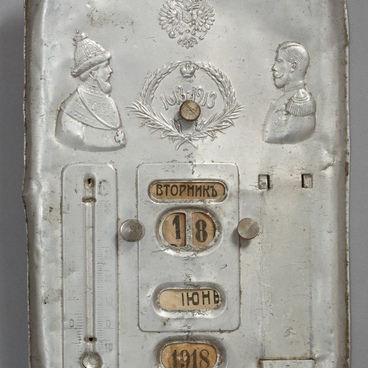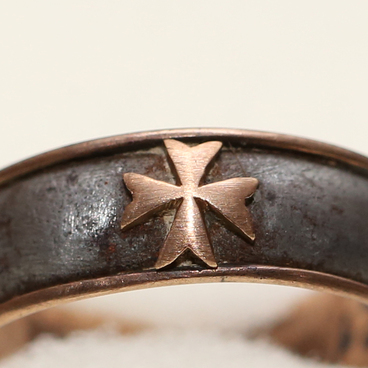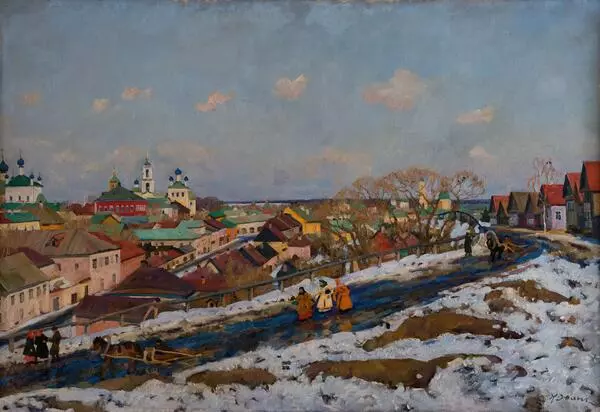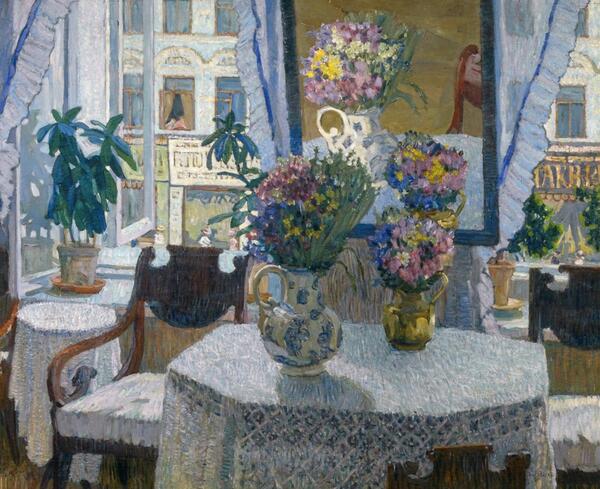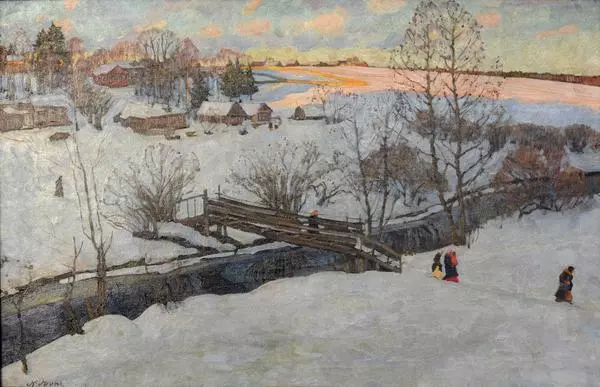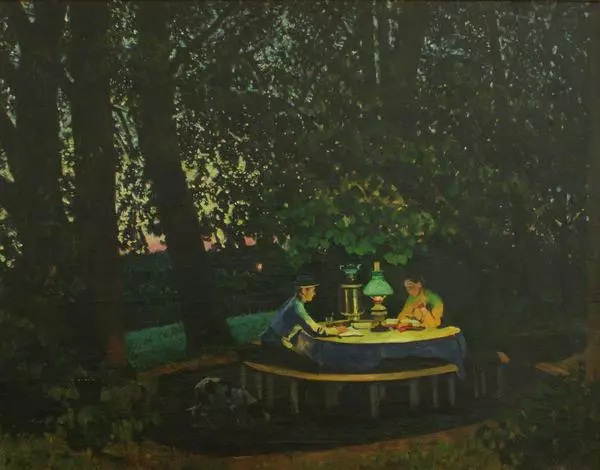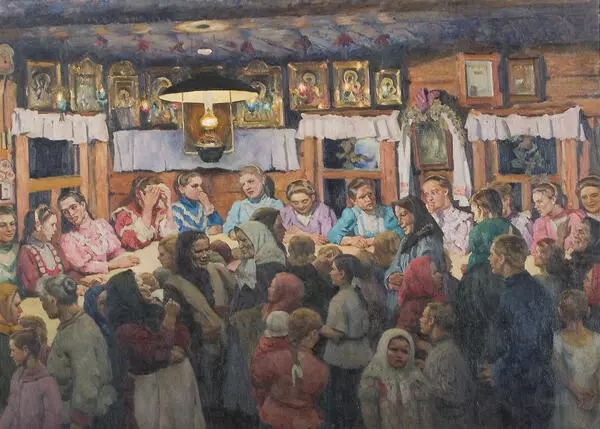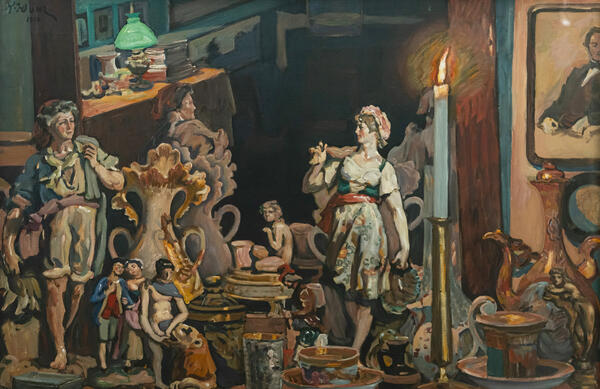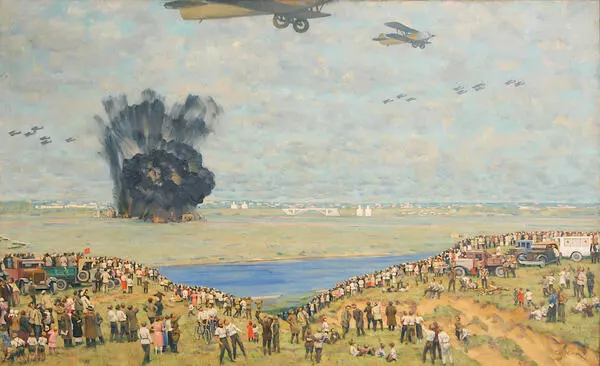The portrait of the Grand Duchess Elizaveta Fyodorovna was presumably painted by Constantine Yuon. According to another version, it could have been authored by his student - the artist Ivan Mitrofanov. However, the latter wrote in his diary that Yuon had also participated in the work: ‘Yuon brought a big picture… and said: “…you will write from the photo…” And continued: “Yuon skillfully extinguished the whiteness…, and Yuon took over the entire sanctified right part…”
The Grand Duchess Elizaveta Fyodorovna was the Mother Superior of the Marfo-Mariinsky Convent of Mercy. Her whole life was dedicated to charity including care for children from poor families - she was the guardian of numerous organisations that helped orphans and children from poor families. One such institution, Elizaveta’s Gymnasium in Moscow, provided education to the daughters of soldiers who had died in the Russo-Turkish war of 1877-1878. It was in honour of the guardian Elizaveta Fyodorovna. The original portrait, presented in the exposition adorned the assembly hall of the institution. And after the 1917 October revolution the canvas found its way to the artist Ivan Mitrofanov: his uncle had been appointed head of the labour school set up instead of the gymnasium, who, in most likelihood, had handed the portrait over to his nephew.
The Grand Duchess Elizaveta Fyodorovna was the Mother Superior of the Marfo-Mariinsky Convent of Mercy. Her whole life was dedicated to charity including care for children from poor families - she was the guardian of numerous organisations that helped orphans and children from poor families. One such institution, Elizaveta’s Gymnasium in Moscow, provided education to the daughters of soldiers who had died in the Russo-Turkish war of 1877-1878. It was in honour of the guardian Elizaveta Fyodorovna. The original portrait, presented in the exposition adorned the assembly hall of the institution. And after the 1917 October revolution the canvas found its way to the artist Ivan Mitrofanov: his uncle had been appointed head of the labour school set up instead of the gymnasium, who, in most likelihood, had handed the portrait over to his nephew.

